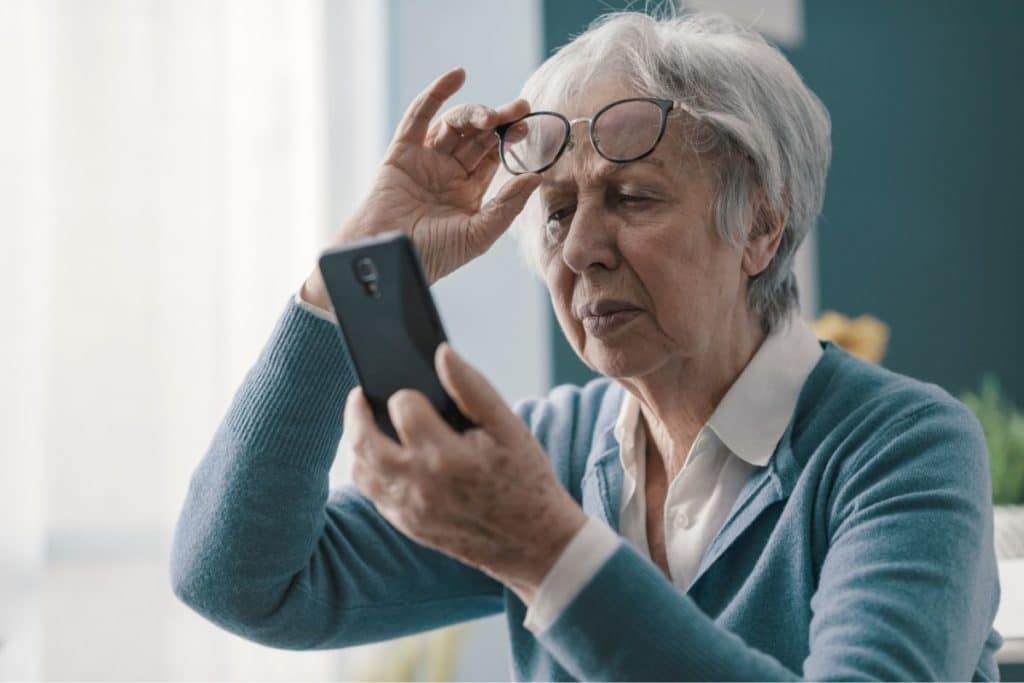Vision is one of the most relied-on senses, but many people notice that their eyesight shifts more after age 60. These changes might be subtle at first—reading a little closer to the light, needing more time to adjust to darkness—but they can gradually impact daily life.
This guide explains how your vision changes as you age, what to expect, and what steps you can take to keep your eyes as healthy as possible in your senior years.
Common Vision Changes After 60
Changes in your eyes are a natural part of aging. While not all of them lead to significant issues, recognizing early signs of vision problems is crucial for protecting your eyesight.
Presbyopia
This common condition makes it harder to focus on close objects, often requiring reading glasses. Presbyopia usually starts in midlife but can worsen with time. Reading small print or using a phone might feel more difficult without extra light or magnification.
Dry Eyes
Your tear production decreases with age, often leading to burning or a gritty feeling. Dry eyes may cause blurriness or discomfort but can usually be managed with artificial tears, humidifiers, and proper hydration.
Difficulty Seeing in Low Light
Aging causes your pupils to become smaller and less responsive. This makes it harder to see in the dark or adjust between bright and dim environments. Driving at night might become more challenging, and indoor lighting must be more colorful to compensate.
Age-Related Eye Conditions to Watch For
Some vision changes result from age-related conditions that need prompt attention. These can affect quality of life or lead to permanent vision loss if untreated.
Cataracts
Cloudy lenses caused by cataracts are very common in seniors. Over time, vision may become foggy or dull. Cataract surgery is safe and highly effective in restoring clear sight.
Macular Degeneration
This condition affects central vision and may lead to blurry or blank spots. Early detection is essential; specific lifestyle changes and supplements may help slow progression.
Glaucoma
Often called the “silent thief of sight,” glaucoma increases eye pressure and damages the optic nerve. There are usually no symptoms until vision is lost, so regular screening is essential.
Diabetic Retinopathy
Seniors with diabetes are at risk for this condition, which damages blood vessels in the retina. Managing blood sugar and scheduling routine diabetic eye exams can help prevent severe vision loss.
Supporting Healthy Vision as You Age
Although aging eyes are unavoidable, there are proven ways to keep them healthier for longer.
Schedule Routine Eye Exams
Annual visits to your optometrist help detect changes early. These exams are key in identifying disease before symptoms appear.
Eat for Eye Health
A diet rich in leafy greens, colorful fruits, fish, and nuts supports good vision—nutrients like omega-3s, vitamin C, and zinc play important roles in eye function.
Wear UV Protection
UV rays increase the risk of cataracts and other eye conditions. To effectively shield your eyes outdoors, choose sunglasses for eye protection that offer 100% UVA and UVB protection.
Avoid Smoking
Smoking speeds up the aging process in your eyes and raises the risk of several vision problems. Quitting has long-term benefits for both vision and overall health.
What to Do When Your Vision Changes

Understanding how your vision changes as you age is the first step to protecting your sight. Some changes are natural, like needing reading glasses. Others, such as worsening night vision or blank spots, may signal more serious concerns that warrant a comprehensive eye exam. Don’t ignore the signs—early action is always best.
If you’re experiencing changes in your vision or haven’t had an eye exam in over a year, contact Art of Optiks today. Your eyesight deserves expert care, no matter your age.

